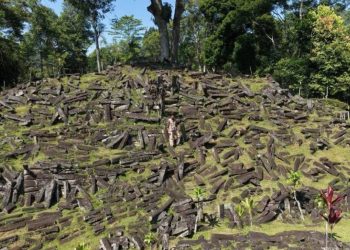Jakarta, Indonesia Sentinel — Indonesia’s Ministry of Forestry has released an official grading system for mountain hiking trails across national parks and nature reserves, aiming to improve safety following a series of recent accidents.
Forestry Minister Raja Juli Antoni said the move was prompted in part by the death of Brazilian climber Juliana Marins on Mount Rinjani, which highlighted the need for stronger oversight of hiking routes.
“Hiking is a high-risk activity. The principle of zero accidents means that every life must be protected with strong safety systems, from the start of the journey to the descent,” Raja Juli said in the ministry’s report, published Tuesday (August 19).
The new grading system classifies hiking trails based on difficulty, terrain, weather conditions, and other risk factors. It is intended to help hikers better understand the dangers of each route and guide park managers in drafting safety protocols and trail management policies.
According to the ministry, trail grades will determine requirements for guides, insurance coverage, safety infrastructure, and the deployment of search-and-rescue teams.
Indonesia’s Forestry Ministry divided mountain routes into five categories, ranging from Grade I (easy/low risk) to Grade V (difficult/high risk). “Most mountain trails within national parks and nature tourism areas carry physical challenges and environmental risks that should not be underestimated. Each grade reflects a different level of danger,” the report noted.
Read Also:
Bukit Barisan: Mountain Range in Sumatra Guarded by the Mysterious Orang Bunian
The ministry listed 81 mountain hiking trails across the country under its new risk-based grading system. Overall, the list includes four trails rated Grade I (easy), 26 at Grade II, 32 at Grade III, 16 at Grade IV, and three at Grade V, the highest risk category
About 40% of trails are classified as Grade III, meaning hikers must have prior experience on lower-grade climbs. Meanwhile, only three hiking routes considered very dangerous which is classified as grade V.
Grade V trails are considered the most dangerous, combining treacherous terrain, difficult access, and highly unpredictable weather conditions. These include the Blangkejeren route on Mount Leuser in Aceh, the Yellow Valley–Summit route on Carstensz Pyramid in Papua, and the Habema–Summit route on Mount Trikora.
(Raidi/Agung)
























